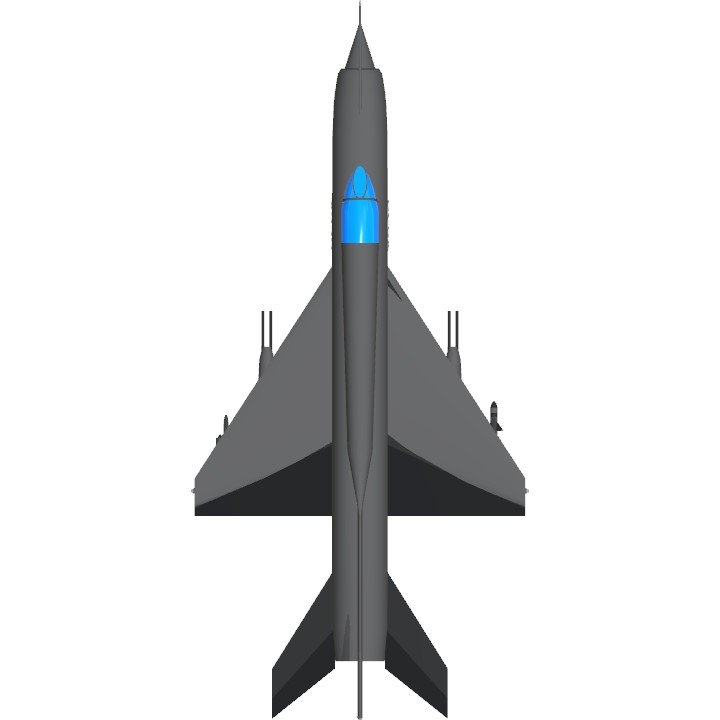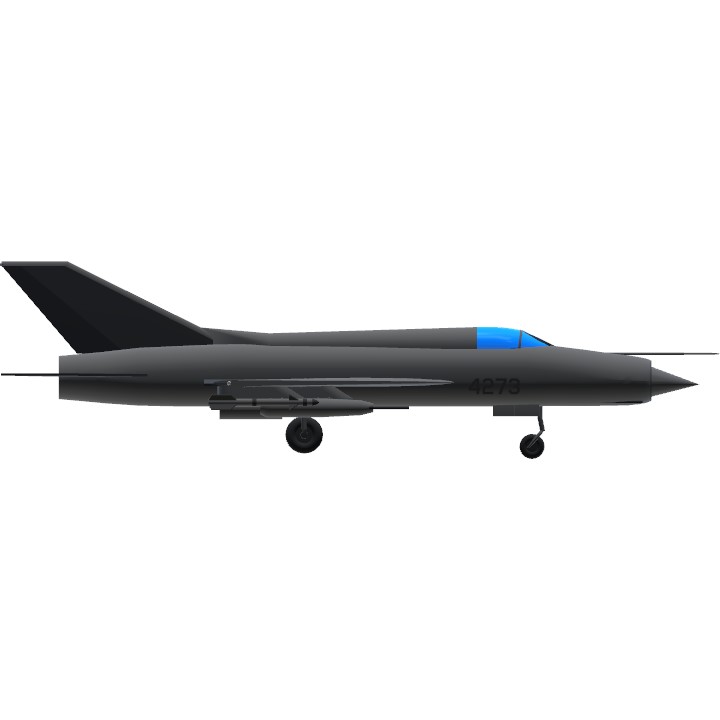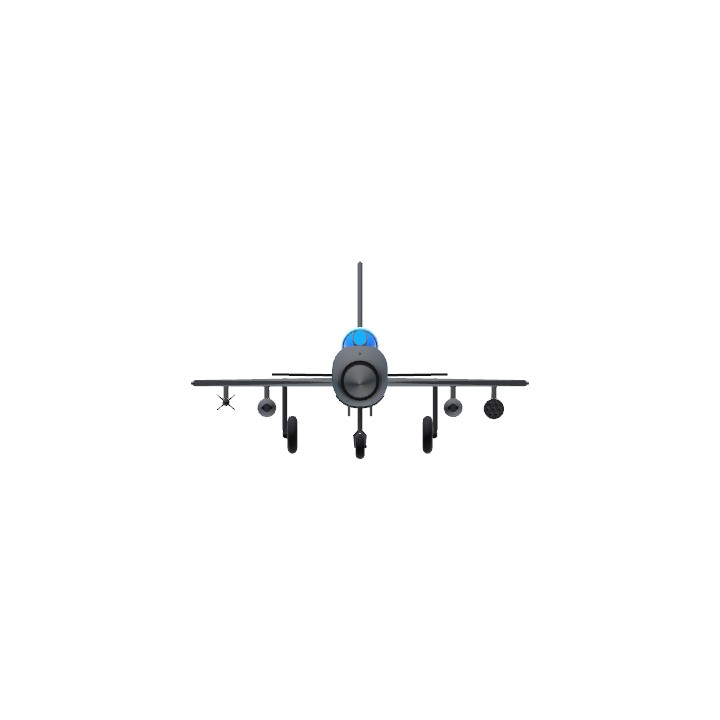A simple mig-21 created by gründerDynamics.
Controls:
AG1: NAV Lights
AG2: Jettison weapons
AG3: Afterburner
VTOL: Flaps
Trim: trim
Brakes: airbrakes/wheelbrakes
Simple isn’t it?
Copied from wikipedia:
MiG-21
Croatian MiG-21 (cropped).jpg
Croatian MiG-21BIS-D in flight
Role Fighter and interceptor aircraft
National origin Soviet Union
Design group Mikoyan-Gurevich
First flight 16 June 1955 (Ye-4)[citation needed]
Introduction 1959 (MiG-21F)
Status In service
Primary users Soviet Air Forces (historical)
Indian Air Force
Croatian Air Force
Produced 1959–1985
Number built 11,496[1]
(10,645 produced in the USSR, 840 in India, 194 in Czechoslovakia)
Variants Chengdu J-7
The Mikoyan-Gurevich MiG-21 (Russian: ?????? ? ??????? ???-21; NATO reporting name: Fishbed) is a supersonic jet fighter and interceptor aircraft, designed by the Mikoyan-Gurevich Design Bureau in the Soviet Union. Its nicknames include: "balalaika", because its planform resembles the stringed musical instrument of the same name; "Olówek", Polish for "pencil", due to the shape of its fuselage,[2] and "Én B?c", meaning "silver swallow", in Vietnamese.
Approximately 60 countries across four continents have flown the MiG-21, and it still serves many nations six decades after its maiden flight. It set aviation records, becoming the most-produced supersonic jet aircraft in aviation history, the most-produced combat aircraft since the Korean War and, previously, the longest production run of any combat aircraft (now exceeded by both the McDonnell Douglas F-15 Eagle and General Dynamics F-16 Fighting Falcon).
Development[edit]
Origins[edit]
The MiG-21 jet fighter was a continuation of Soviet jet fighters, starting with the subsonic MiG-15 and MiG-17, and the supersonic MiG-19. A number of experimental Mach 2 Soviet designs were based on nose intakes with either swept-back wings, such as the Sukhoi Su-7, or tailed deltas, of which the MiG-21 would be the most successful.
Development of what would become the MiG-21 began in the early 1950s when Mikoyan OKB finished a preliminary design study for a prototype designated Ye-1 in 1954. This project was very quickly reworked when it was determined that the planned engine was underpowered; the redesign led to the second prototype, the Ye-2. Both these and other early prototypes featured swept wings. The first prototype with the delta wings found on production variants was the Ye-4. It made its maiden flight on 16 June 1955 and its first public appearance during the Soviet Aviation Day display at Moscow's Tushino airfield in July 1956.
In the West, due to the lack of available information, early details of the MiG-21 often were confused with those of similar Soviet fighters of the era. In one instance, Jane's All the World's Aircraft 1960–1961 listed the "Fishbed" as a Sukhoi design and used an illustration of the Su-9 'Fishpot'.
Some stuff: taking off at 100% throttle is probably NOT recommended, no cockpit this time, probably a continuation of the phoenix industrial aircraft which is a fictional industry/airforce
And I have improved my building skills.
Using the cannons is too fun
-my friend
nice plane
-my friend x2
This migs performance is barely accurate to the actual mig-21.
Still fun to fly though but has extremely powerful ailerons.
Happy Flying guys!
Specifications
General Characteristics
- Created On iOS
- Wingspan 22.0ft (6.7m)
- Length 47.0ft (14.3m)
- Height 12.9ft (3.9m)
- Empty Weight N/A
- Loaded Weight 16,094lbs (7,300kg)
Performance
- Power/Weight Ratio 8.587
- Wing Loading 67.6lbs/ft2 (330.0kg/m2)
- Wing Area 238.2ft2 (22.1m2)
- Drag Points 4661
Parts
- Number of Parts 116
- Control Surfaces 7
- Performance Cost 673




